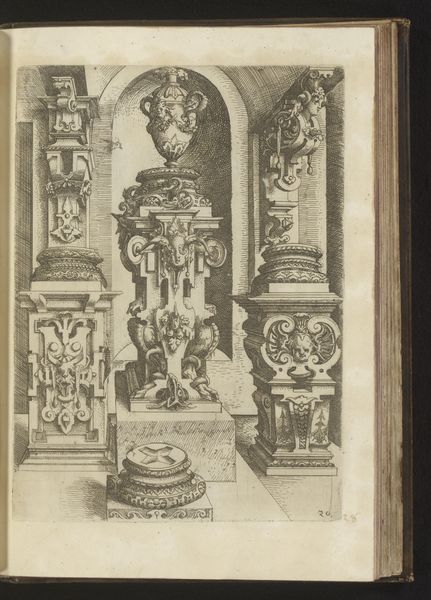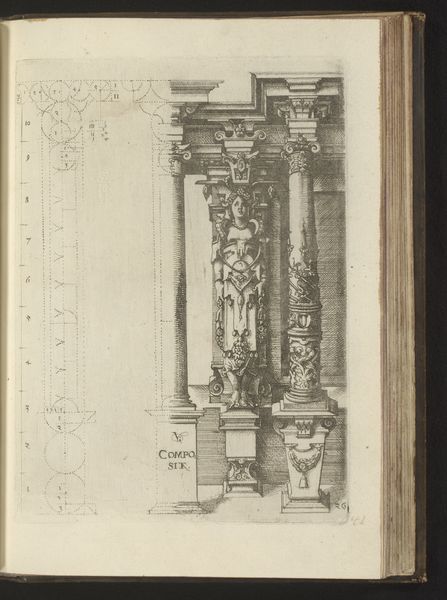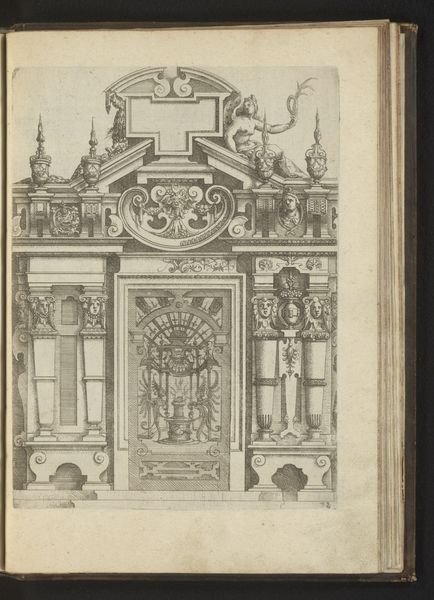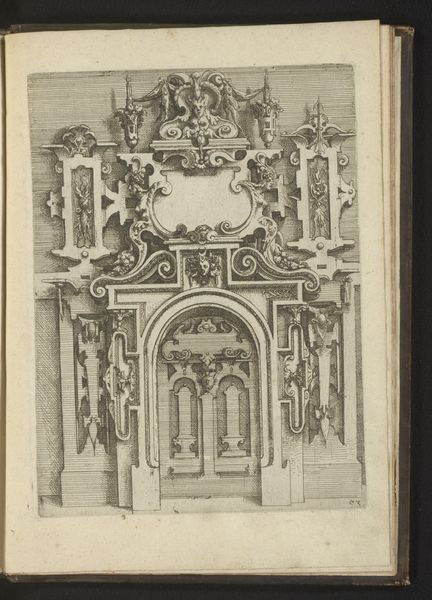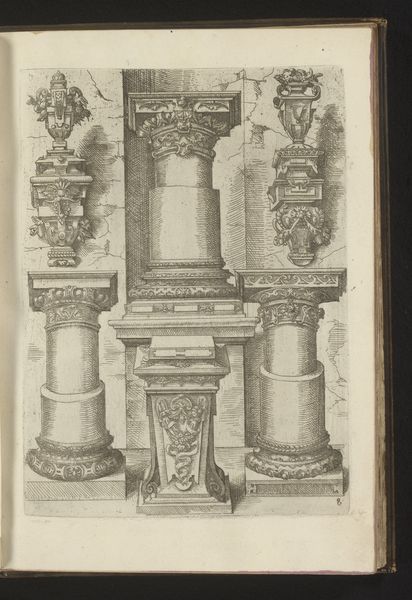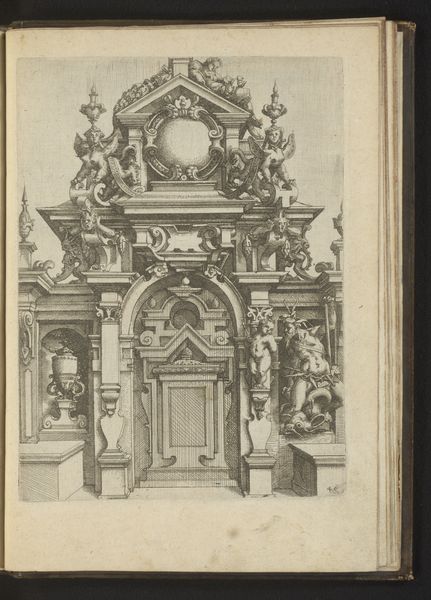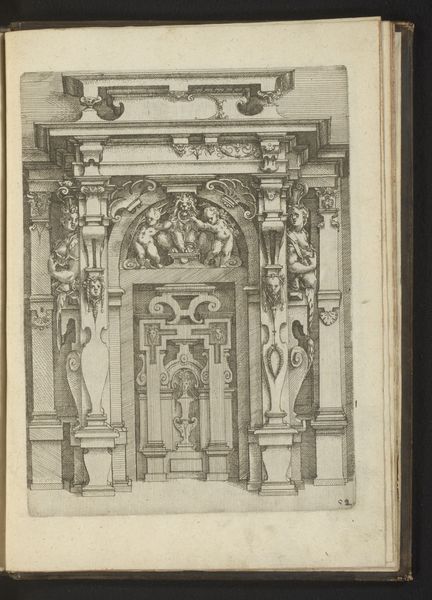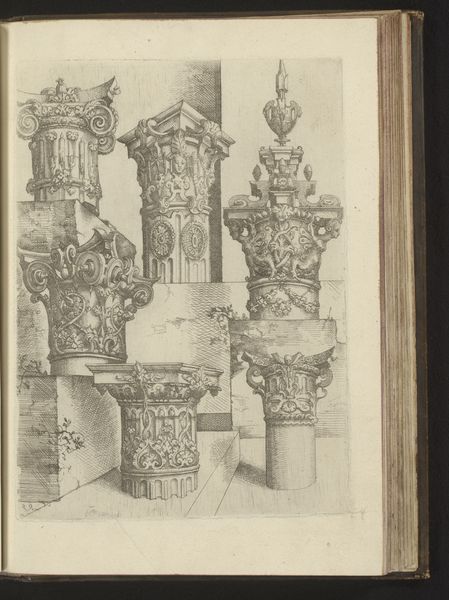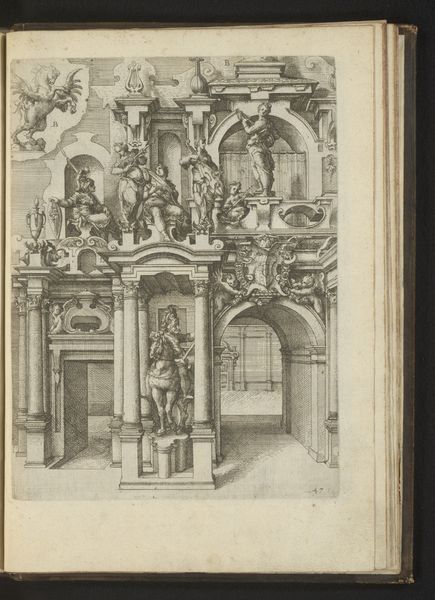
Drie composiete piëdestals gedecoreerd met ramskoppen, mascarons en voluten met daarop vazen en een console met een herme 1593 - 1595
0:00
0:00
drawing, ink, architecture
#
drawing
#
classical-realism
#
mannerism
#
ink
#
geometric
#
column
#
architecture
Dimensions: height 250 mm, width 175 mm
Copyright: Rijks Museum: Open Domain
Here we see Wendel Dietterlin’s design for three composite pedestals, rendered in ink around the late 16th century. Note the prominent use of rams' heads, masks, and volutes—these are not mere decoration, but symbols laden with historical weight. Consider the rams' heads. In antiquity, the ram was a symbol of virility, leadership, and sacrifice. They were often linked to deities, embodying strength and fertility. Now, observe how Dietterlin places them within a novel architectural context. These symbols transcend their original religious connotations, becoming ornamental motifs. The persistence of such images reveals a deep cultural memory at play. The emotional power these symbols held in ancient rituals is transmuted into a more secular aesthetic. This interplay between the sacred and the secular demonstrates the enduring influence of the past, shaping the present with echoes of forgotten beliefs. The psychological resonance of these forms lingers, engaging viewers on a subconscious level. The symbols evolve, adapt, and find new life, proving that history is not linear, but cyclical, constantly resurfacing in unexpected forms.
Comments
No comments
Be the first to comment and join the conversation on the ultimate creative platform.
